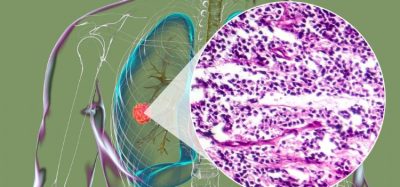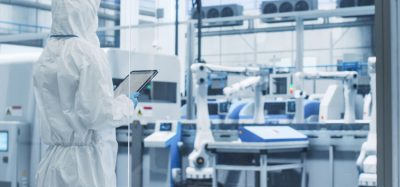Pioneering the next wave of LBP-based therapeutics
Posted: 8 May 2024 | Christopher Weidenmaier (mbiomics), Johannes B. Woehrstein (mbiomics) | No comments yet
Christopher Weidenmaier, PhD, Chief Scientific Officer, and Johannes B. Woehrstein, PhD, Chief Technology Officer at mbiomics share with EPR about the challenges and considerations of manufacturing microbiome-based therapeutics.


Although we have yet to understand the human microbiome and its role in disease fully, the scientific evidence on the efficacy of complex live biotherapeutic products (LBPs) in modulating the microbiome is striking, as evidenced by the approval of the first two commercial donor-derived products, Rebyota and VOWST, in 2022 and 2023, respectively.
What are the top three trends in microbiome-based therapeutic development?
Bacterial LBPs have demonstrated the potential to modulate the human microbiome and positively alter this highly complex and interactive community.1 Today’s advances in precision analytics and computational biology allow us to rationally design and manufacture novel and improved LBPs.
Thus, the first current trend is to approach microbiome-based therapies from a techbio perspective and leverage converging technologies (ie, combining data science, precision microbiome analytics, and next-generation manufacturing approaches).
a new and promising trend is emerging that combines the ‘whole ecosystem’ of FMTs with rational consortia design”
Second, the early days of microbiome therapeutics development were focused on two development paths. One was focused on single-strain or small consortia, while the other was focused on transforming faecal microbiota transplants (FMTs) into donor-derived products manufactured with controllable processes.2
Driven by the success of FMTs with clinical efficacy in several indications3-6 and the first two FDA-approved donor-derived products on the market for recurrent Clostridioides difficile infections,7,8 a new and promising trend is emerging that combines the ‘whole ecosystem’ of FMTs with rational consortia design. Such novel large consortia LBPs combine the translational de-risked clinical efficacy of FMT and donor-derived products with the controlled and scalable manufacturability of defined consortia.
development of large consortia with novel manufacturing technologies can alleviate some of the challenges currently facing donor-derived microbiome therapeutics, such as…GMP-compliant manufacturability”
Third, the development of large consortia with novel manufacturing technologies can alleviate some of the challenges currently facing donor-derived microbiome therapeutics, such as the need for a donor programme with rigorous safety testing, consistent product composition, GMP-compliant manufacturability, and commercialisation potential hampered by high cost of goods.
Based on the growing evidence of positive outcomes seen with full ecosystem products, mbiomics has developed a proprietary techbio platform that aims to combine the disease-modifying potential of large consortia with the safety and scalable manufacturability of GMP-manufactured non-engineered microbial strains isolated from healthy individuals.
This platform enables us to select and combine specific microbial strains based on their individual properties and function in a community, enabling the creation of safe microbiome-based therapeutics tailored to specific indications.
What are the main R&D challenges of next-generation microbiome-based therapeutics? What are promising solutions?
The first major R&D challenge in developing microbiome therapies lies in our incomplete understanding of the microbiome’s function in disease pathogenesis and the challenges in defining global standards for the generation of comparable analytic results and data sets.9,10 While the field has identified several key mechanisms of action across disease indications, a systems-level understanding of interactions within and between the microbiota and the host remains largely elusive. To address this, a two-pronged approach is required to both (a) design consortia that combine healthy ecosystem composition with well-supported MOAs across indications and (b) develop novel pharmacokinetic/ pharmacodynamic (PK/PD) strategies that require precise and quantitative microbiome analytics.
mbiomics proprietary technology11 allows us to track and understand bacterial product engraftment in the patient microbiome. This includes measuring the effects of LBP dose and regimen on engraftment, assessing the impact on the patient’s endogenous microbiome, and correlating with the hosts’ responses to enable effective clinical development.
The second major challenge, especially for creating larger consortia products, is developing novel manufacturing processes that enable the production of such consortia at low cost of goods. This requires, among other things, adequate analytical technology that enables innovative fermentation methods and the optimisation of the potency of formulated drug products.
View previous articles in this series:
Advancing microbiome innovation
Live biotherapeutic products: bridging innovations and challenges in manufacturing
Navigating the unique CMC challenges of oral anaerobic live biotherapeutics
In developing microbiome-based therapeutics, what are two of the most-overlooked aspects?
Although there have been significant strides in understanding the human microbiome, gaps remain in our knowledge of what constitutes a healthy microbiome and how LBP-based interventions can be designed to address microbiome dysfunction in disease. Nonetheless, modern analytical tools and information exchange can help to fill these gaps, along with streamlined manufacturing processes and novel approaches for potency and release assays required for regulatory approval. Accumulating clinical evidence on the efficacy of approaches, such as FMTs, suggests that complex synthetic consortium approaches are promising and can pioneer the next wave of LBP-based therapeutics.
How are advanced technologies impacting the development of these therapies?
For the first time, novel manufacturing technologies enable us to create diverse, functionally complex consortia under GMP”
For the first time, novel manufacturing technologies enable us to create diverse, functionally complex consortia under GMP. These complex LBPs can cover a broad taxonomic and functional spectrum and exhibit a significant functional redundancy. This enables them to adapt to the highly diverse microbiota present in the body, a key factor in addressing the current challenge of patient heterogeneity and reducing the risk of clinical translation of this new product class.
In addition, precision analytics impact the development and subsequent monitoring of complex manufacturing processes by tracking functional and taxonomic biomarkers, ensuring the consortium is functional and potent, ultimately leading to consistent, high-quality therapeutics.
What excites you about the future of this field?
We believe we are only at the beginning of understanding the full potential of the microbiome and the tremendous potential microbiome-based therapeutics can provide to patients.
We now have the tools to consolidate the last 20 years of experience in the field and build a scalable platform for developing LBP-based microbiome therapeutics. This will help address a variety of indications with high unmet medical needs, such as autoimmune diseases, cancer, and neurological disorders.
A well-developed platform can leverage similar assets to be used along the drug development process across a variety of indications, including:
- Strain libraries
- Computational pipelines using the latest AI and machine learning advances for product design and consortia selection
- Manufacturing
- Fermentation processes.
This flexibility opens a wide number of application areas for this novel approach that has the potential to address limitations of current standard-of-care therapies and provide new treatment avenues for patients with otherwise poor prognoses.
About the interviewees
Christopher Weidenmaier, PhD, is Chief Scientific Officer at mbiomics. He is a microbiologist and immunologist with nearly 20 years of experience in the microbiome and infectious diseases fields spanning from drug discovery to clinical development of therapeutic candidates across several indications.
Previously, Christopher held the position of Director of Research and Head of Host Cell Biology/Immunology at Finch Therapeutics.
Before that, he held positions as a principal investigator at the University of Tuebingen, Germany, and a prior postdoc position at Harvard Medical School in Boston. Christopher holds a PhD in Microbiology from the University of Tuebingen, Germany.
Johannes B. Woehrstein, PhD, is co-founder and Chief Technology Officer of mbiomics. Drawing on 15 years of entrepreneurial experience, he invented multiple technologies that led to the launch of several biotech companies, including Ultivue and DEOXY.
Previously, he held positions as a principal investigator at the Faculty of Physics at Ludwig-Maximilians-Universität in Munich, Germany, and as a research scientist at the Wyss Institute at Harvard University. Jo holds a PhD in Physics from the Ludwig-Maximilians-Universität in Munich, Germany.
References
- Sorbara MT, Pamer, EG. Microbiome-based therapeutics. Nat. Rev. Microbiol. 2022 206 20, 365–380.
- Malard F. et al. Pooled allogeneic faecal microbiota MaaT013 for steroid-resistant gastrointestinal acute graft-versus-host disease: a single-arm, multicentre phase 2 trial. eClinicalMedicine 2023. 62, 102111.
- Davar, D. et al. Fecal microbiota transplant overcomes resistance to anti–PD-1 therapy in melanoma patients. Science. 2021. (80-. ). 371, 595–602.
- Baruch EN. et al. Fecal microbiota transplant promotes response in immunotherapy-refractory melanoma patients. Science. 2020. (80-).
- Feng J. et al. Efficacy and safety of fecal microbiota transplantation in the treatment of ulcerative colitis: a systematic review and meta-analysis. Sci. Reports. 2023 131 13, 1–13.
- Routy B. et al. Fecal microbiota transplantation plus anti-PD-1 immunotherapy in advanced melanoma: a phase I trial. Nat. Med. 2023: 29.
- VOWST. [Internet] US FDA. 2023. [cited 2024May]. Available from: https://www.fda.gov/vaccines-blood-biologics/vowst.
- REBYOTA. [Internet] US FDA. 2022 . [cited 2024May]. Available from: https://www.fda.gov/vaccines-blood-biologics/vaccines/rebyota.
- Amos, GCA, Logan A., Anwar S. et al. Developing standards for the microbiome field. Microbiome. 2020: 8, 98.
- Sergaki C., Anwar S., Fritzsche M. et al. Developing whole cell standards for the microbiome field. Microbiome. 2022: 10, 123.
- Woehrstein JB. et al. Sub–100-NM metafluorophores with digitally tunable optical properties self-assembled from DNA. Science Advances. 2017. 3(6).
Related topics
Biopharmaceuticals, Drug Development, Drug Manufacturing, Drug Safety, Manufacturing, Microbiome therapeutics: microscope to medicine, Microbiomes, Research & Development (R&D), Technology, Therapeutics









